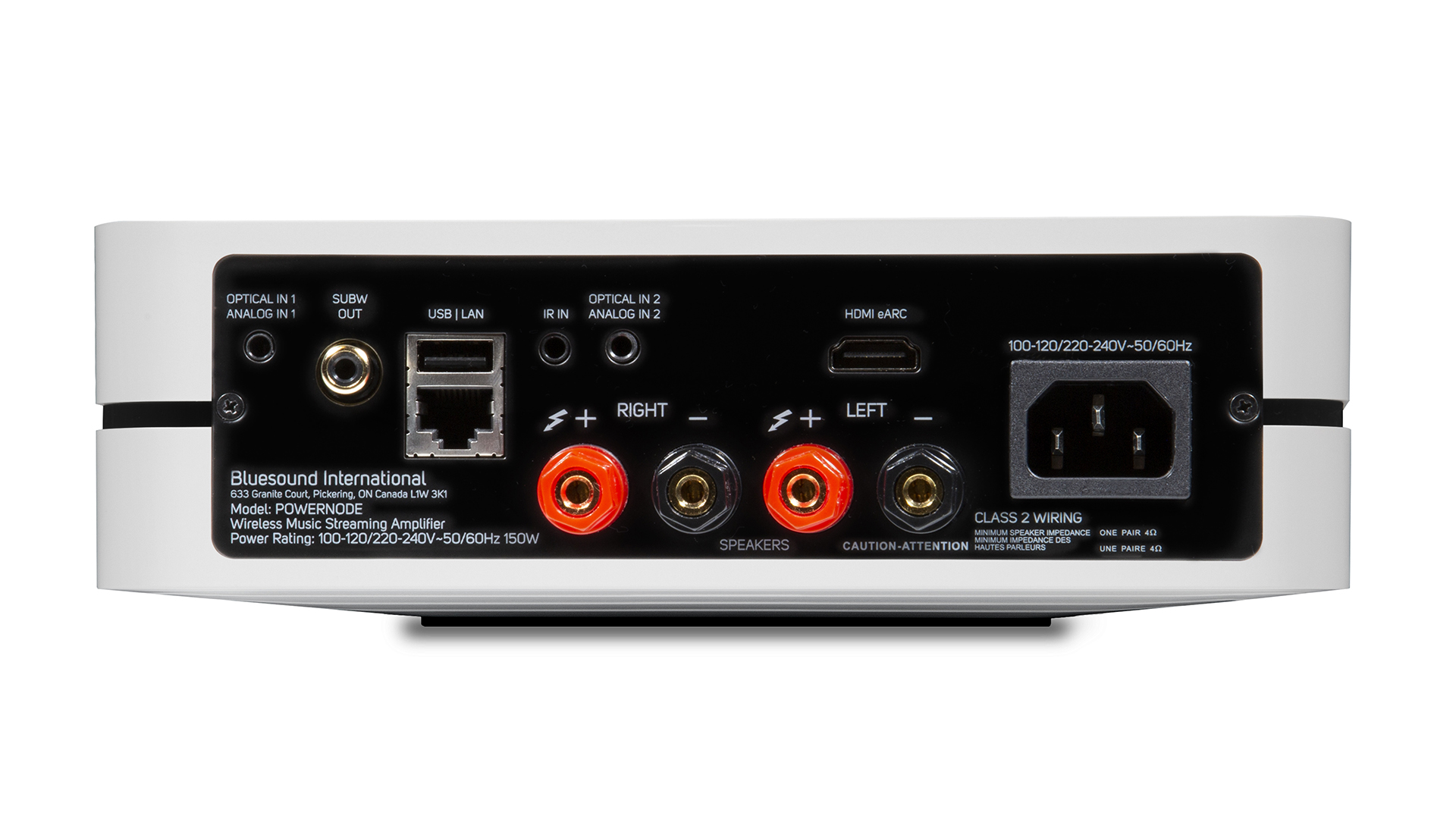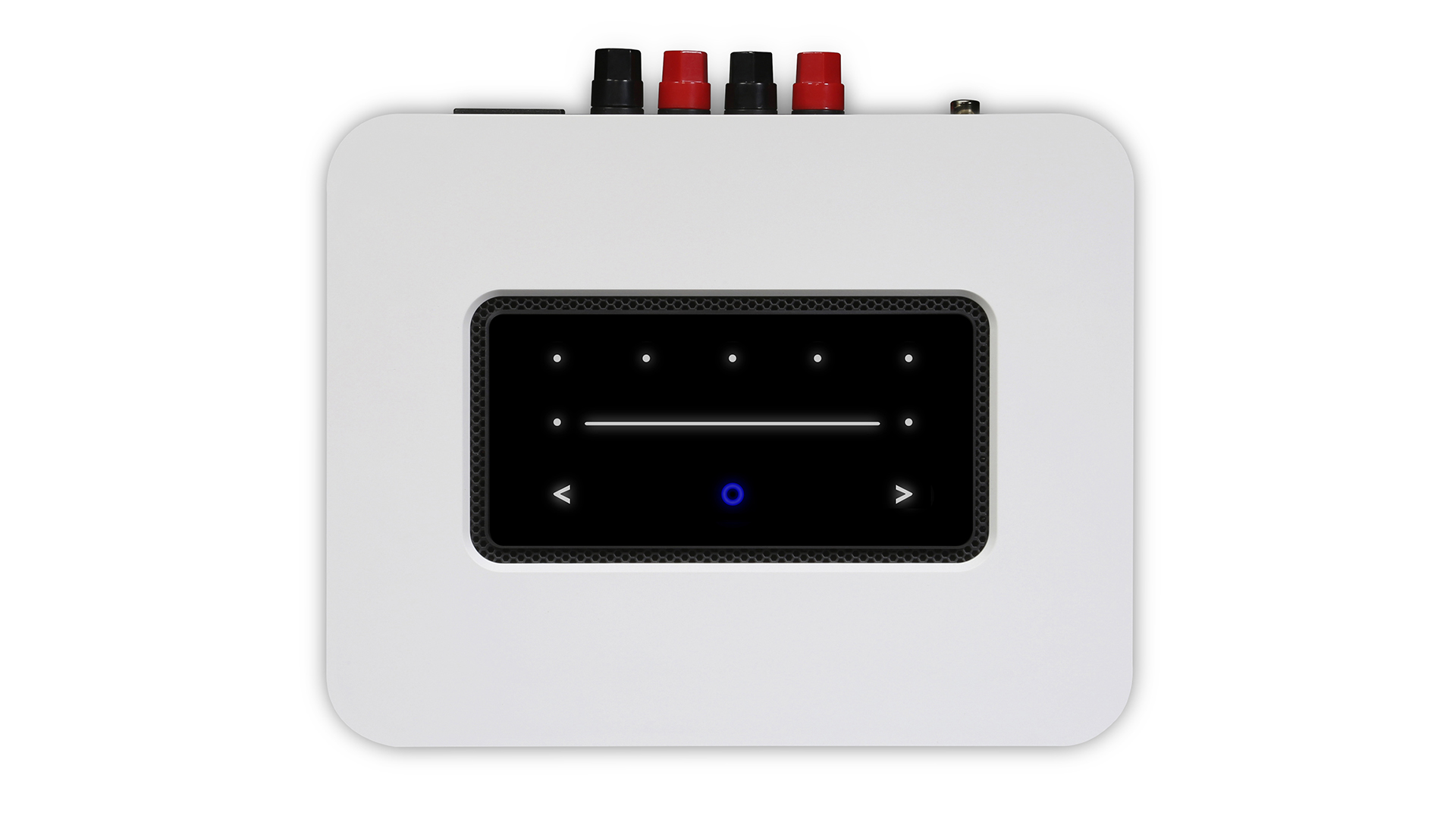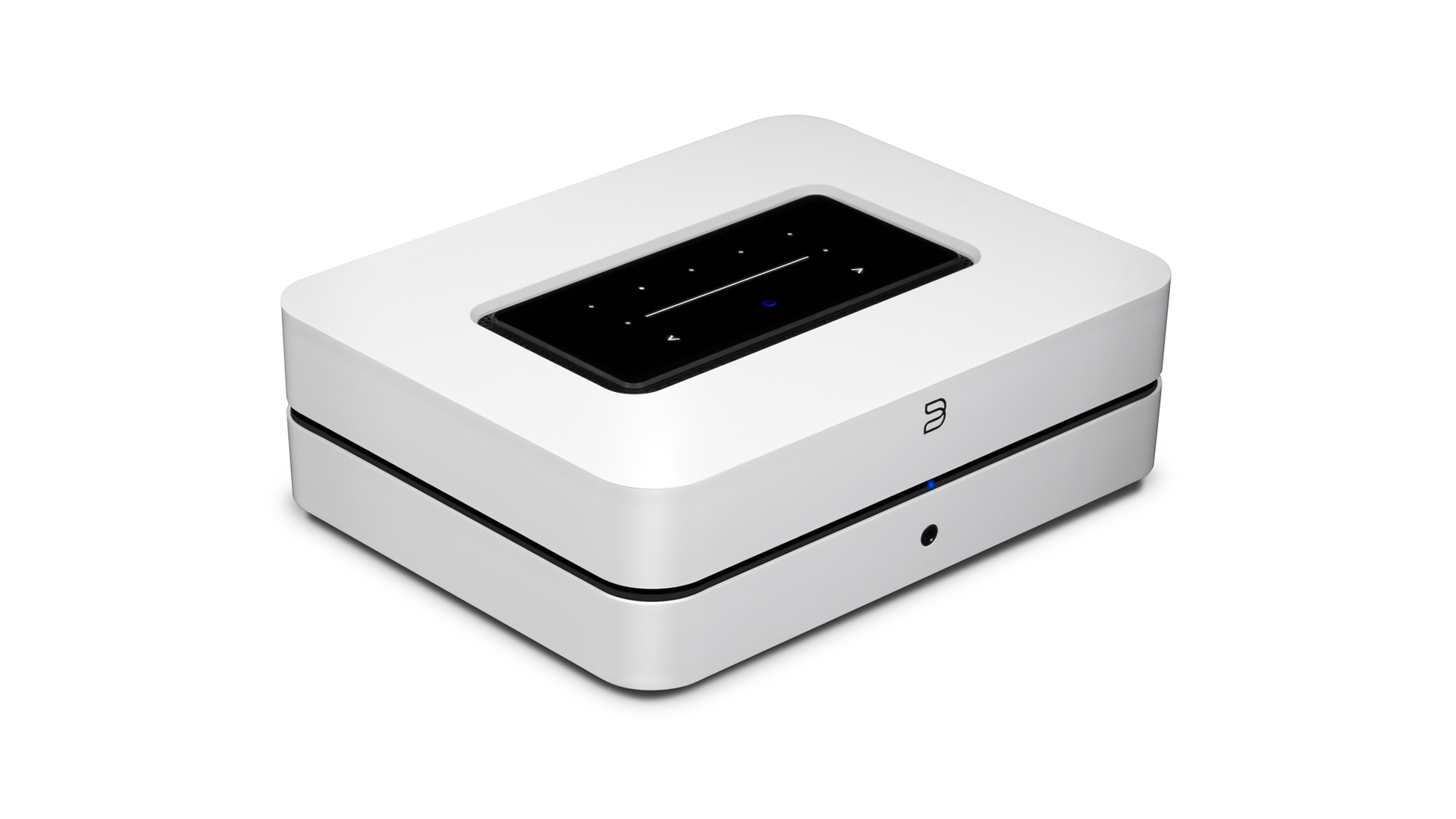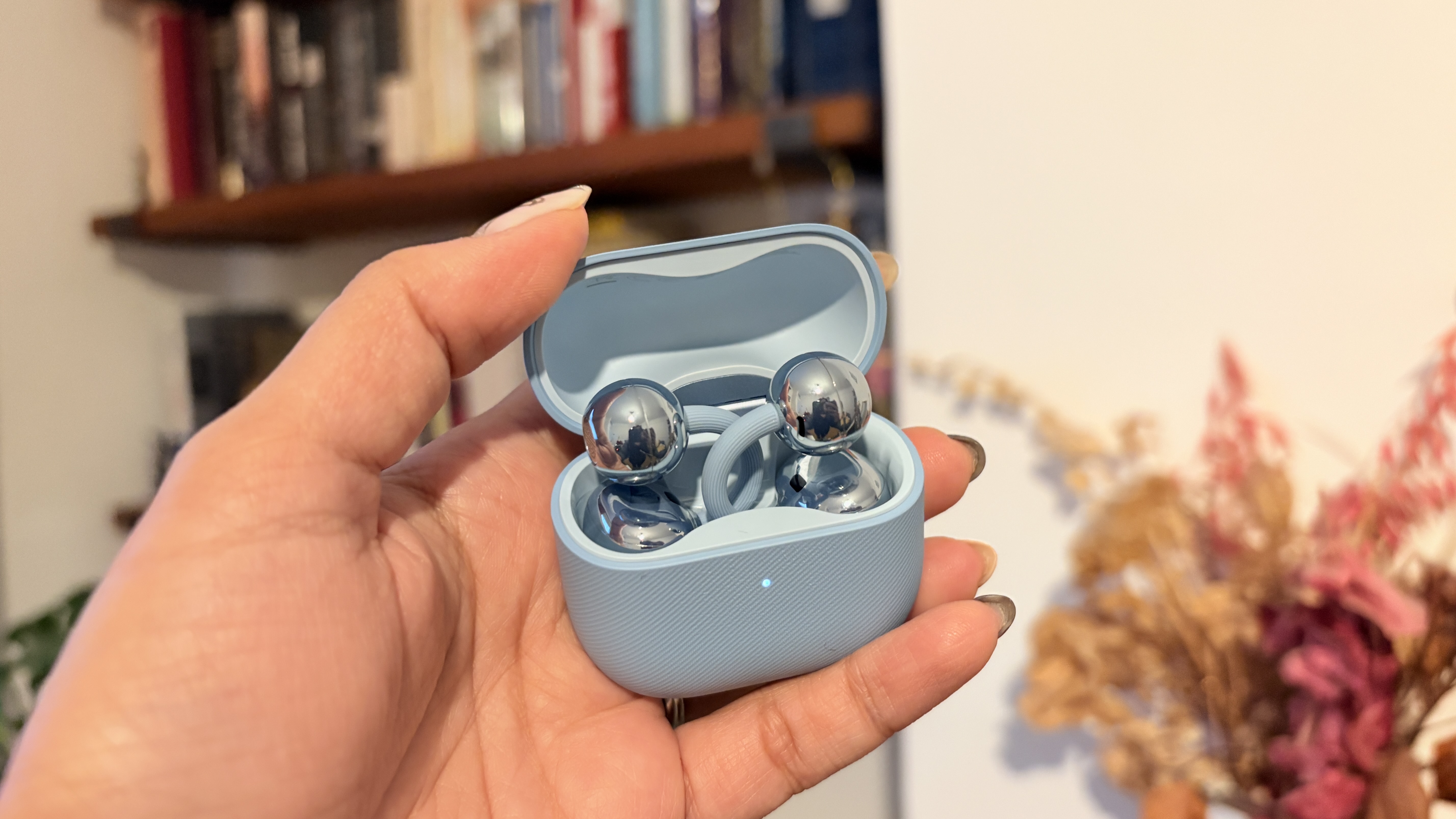What Hi-Fi? Verdict
Whether used in solo or within a Bluesound multi-room system, the latest Powernode is a superb streaming amplifier
Pros
- +
Punchy, musical performer
- +
BluOS a treat to operate
- +
Inconspicuous design
Cons
- -
Tough competition
Why you can trust What Hi-Fi?
If you can be a veteran in a hi-fi category that’s only truly been prevalent for a handful of years, then Bluesound’s Powernode can be considered one in the network streaming amplifier market. While we have seen a significant rise in brands expanding their portfolios to include such just-add-speaker systems in recent times, Bluesound has been in the game for years with its Powernode.
The one under the spotlight here is the fourth-generation model, which succeeds the 2018-released Powernode 2i and returns to the original suffix-less name as it does so. Those familiar with the Canadian company’s product line-up won’t be surprised to read that this Powernode remains an amplified version of the company’s Node music streamer, the latest version of which is a 2021 What Hi-Fi? Award winner at its entry-level price point.
The Powernode was born into the world alongside it, and followed it into our test rooms during the period of this year’s What Hi-Fi? Awards judging. That this review doesn’t have Award-winning recognition brandished across the top of it is a telltale that we preferred another to it at this price point – namely, the Marantz PM7000N. But just because the Powernode isn’t an outright class leader doesn’t mean it isn’t a superb streaming system or, actually, the number one choice for some.
Features

While not in terms of box count, the Bluesound Powernode is, by nature, conveniently designed to be two thirds of your system – your source and your amplifier. Add the third and final compulsory element, stereo speakers, and your system doesn’t need to be more than three boxes. It can be more, of course; the Powernode’s USB socket and twin mini Toslink/3.5mm combo inputs provide the option to add a music-filled USB drive or, with the right cable, another audio source component, while an HDMI eARC socket can accommodate your TV set-up if you so wish. Just note that if you want to connect a turntable, you’ll need to add a phono stage to the equation, whether that's integrated into the turntable or in a separate box. An output can cater for an external subwoofer, too, if owners want to add bass brunt.
Without plugging anything into it, though, the Powernode itself is a generous soul as a source. Its wi-fi and Ethernet port, built-in streamer (based on BluOS software) and the companion BluOS Controller app together offer steely-gated entry to tens of music streaming services – including but not limited to Apple Music, Tidal, Spotify, Deezer and Qobuz – thanks to good integration as well as support for AirPlay 2, Spotify Connect and Tidal Connect. You’ll need to subscribe to most of these apps to play music from them, of course. Or you can simply stick to accessing and playing music (up to 24-bit/192kHz, MQA-inclusive) stored locally on your device or on your network.
Those entertaining the latter option may be pleased to know the Powernode supports music management platform Roon, although the Powernode’s BluOS is itself a multi-device streaming software platform from which BluOS-enabled hardware (not just from Bluesound but also the likes of NAD and Dali) can be connected and controlled together – in the app or using voice control (via Google Assistant or the dedicated BluVoice skill in the Alexa app).

Power 80W per channel
Bluetooth 5.0, aptX HD
Inputs Mini TOSLINK/3.5mm combo x 2, HDMI eARC, USB
Outputs 3.5mm, subwoofer
Your offline option is, aside from wiring in other sources, aptX HD Bluetooth. That’s implemented two-way here, meaning you can send files from a device to the Powernode and transmit songs playing through the Powernode to wireless headphones or speakers, as an alternative to plugging a pair of headphones into the Powernode’s 3.5mm jack. If your source device and headphones/speakers are aptX HD-compatible, you can wirelessly transmit (compressed) 24-bit music.
The latest hi-fi, home cinema and tech news, reviews, buying advice and deals, direct to your inbox.
So far, this is an identical specification to the Node, but the Powernode’s big differentiator is the 80 watts per channel of ‘HybridDigital’ power amplification, which has been developed by NAD (Bluesound’s sister brand under their Lenbrook International parent company) and is naturally found in its amps of recent years. The amplifier inside the Powernode is more powerful than that used in the previous generation, which delivered a relatively lowly 60 watts per channel. And the generational leap from an engineering aspect is also defined by more advanced DACs as well as more powerful processors that Bluesound says are “eight times faster than previous generations of Bluesound architecture” and therefore capable, to an extent, of handling future software-based technologies that the Powernode could offer down the line via firmware updates.
Sound

For now, though, the Powernode is more or less as well-specced as these kinds of streaming amplifiers come – and, crucially, that is complemented by a talented performance. Like the latest Node, the Powernode is an engagingly musical performer – dynamically fluid and punchy, with plenty of energy to bestow on tracks that warrant it. While Bluesound products have aligned themselves with a rich tonal balance in the past, the latest generation of Node and Powernode have veered away from this slightly. They’re now more neutral sounding in the way they deliver music, while also making gains in clarity and insight across the frequency range.
Essentially what has always been an informative and entertaining presentation is now even more so. We play Conor Oberst’s Overdue and the acoustic strings twang with a good degree of tangibility. The Bluesound tracks the undulation of the harmonica and strumming well, and pays just as much scrutiny to Oberst’s front-and-centre vocal, which comes through the mix bold and full.
Over to Low’s What Part Of Me and the snappy rhythm that underpins the track is unsurprisingly tight and well-driven. It’s this rhythmic potency that plays into the hands of particularly fun speakers, as we find switching from our reference ATC SCM50 to the JBL 4309, so that’s worth considering when thinking of partnering speakers.
There’s not as much rhythmic impetus behind, or sit-up-and-listen directness to, the Marantz PM7000N’s rendition – but it does enough to still be considered musical and counters the Bluesound’s cheerful cadence with a wider-scale, roomier soundstage and greater subtlety. Play Promises – a genre-spanning collaborative album by electronic musician Floating Points, jazz saxophonist Pharoah Sanders and the London Symphony Orchestra – and the Bluesound gives instruments texture and is clear and cohesive in the way it presents them; the Marantz simply plots instrumental strands that bit more precisely on its expansive sonic canvas.
Verdict

The fact that there aren’t many streaming amplifiers available at this modest price point almost means the Bluesound Powernode is among the best by default. But thinking that way undermines its obvious sonic talent and the leap it has made from its predecessor, not to mention the well-roundedness of the feature set that makes Bluesound products so appealing.
In every way, the Powernode is better than ever in its fourth generation, and all told that is really, really good.
SCORES
- Sound 5
- Features 5
- Build 5
MORE:
Also consider the Marantz PM7000N
Here are the best music streamers
What Hi-Fi?, founded in 1976, is the world's leading independent guide to buying and owning hi-fi and home entertainment products. Our comprehensive tests help you buy the very best for your money, with our advice sections giving you step-by-step information on how to get even more from your music and movies. Everything is tested by our dedicated team of in-house reviewers in our custom-built test rooms in London, Reading and Bath. Our coveted five-star rating and Awards are recognised all over the world as the ultimate seal of approval, so you can buy with absolute confidence.


